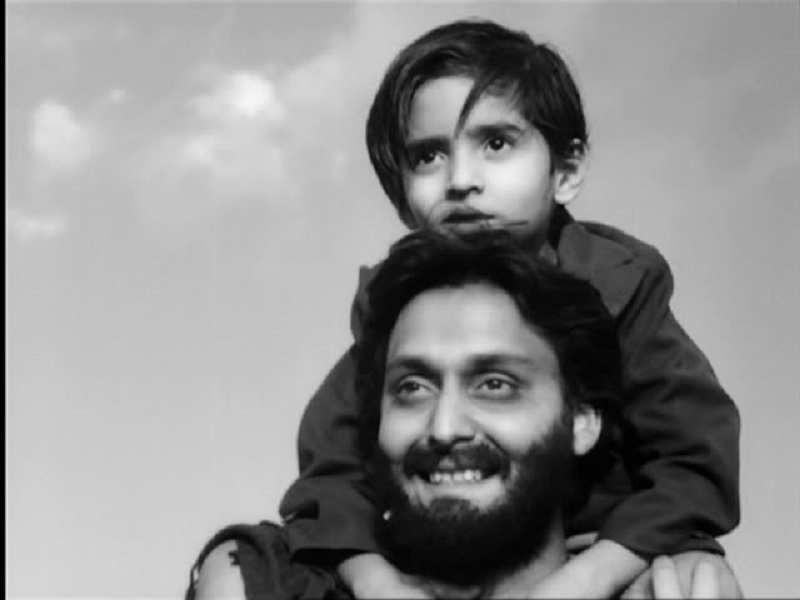 APUR SANSAR (THE WORLD OF APU)
APUR SANSAR (THE WORLD OF APU)Having encountered Apu as a child and as a young man in Pather Panchali and Aparajito, we conclude The Apu Trilogy with Apur Sansar (The World of Apu). This final chapter shows that a film can be simultaneously intimate and epic, universal and distinctly Indian. In short, it is a sad and beautiful ending to perhaps the greatest film trilogy ever made.
Apologies to Star Wars, Lord of the Rings and The Godfather fans.
Our young protagonist Apu (Soumitra Chatterjee) is living a curious life in Calcutta: striving to be a writer, always struggling financially but on the whole content, almost youthfully arrogant in his freedom. His best friend Pulu (Swapan Mukherjee) invites Apu to his cousin's wedding in the country. With no pressing engagements, Apu accepts.
On the day of the wedding the bridegroom is obviously mentally ill and the bride's mother insists that the wedding be called off. However, there is a problem with this: according to the family's beliefs, if the bride does not marry at the appointed time she will be condemned to never marry. To avoid this fate, a new groom has to be found immediately, and there is only one suitable man readily available.
Apu naturally balks at this notion, but he is moved by the family's plight and most reluctantly agrees to marry Aparna (Sharmila Tagore). If he can barely support himself, how can he support a wife, especially one used to wealth and comfort? To his surprise, Aparna is more than resourceful. She is also loyal and loving, and soon it becomes a genuine love-match.
Tragedy strikes however when Aparna dies in childbirth. Apu is despondent and begins to wander the country, abandoning their child and committing his novel to the four winds. Five years later Pulu finds Apu working in the mines and begs him to take up his responsibilities to Kajal (Alok Chakravarty), who has grown wild. Apu does go and finds connecting with him as his father impossible. Instead, Apu tells Kajal that he is his friend and the two go off together.
 The World of Apu does what the previous Apu films did: move the viewer emotionally, hitting us with a tale of life both tragic and beautiful. Its influence is still felt today: those who saw My Family/Mi Familia would recognize the final third of the film as directly taken from The World of Apu (albeit with certain elements more in line with My Family's narrative). It speaks to writer/director Satyajit Ray's work that the situations and circumstances can easily transcend language and cultures.
The World of Apu does what the previous Apu films did: move the viewer emotionally, hitting us with a tale of life both tragic and beautiful. Its influence is still felt today: those who saw My Family/Mi Familia would recognize the final third of the film as directly taken from The World of Apu (albeit with certain elements more in line with My Family's narrative). It speaks to writer/director Satyajit Ray's work that the situations and circumstances can easily transcend language and cultures.The World of Apu succeeds in large part because the elements of the common human condition are there: life, love and loss, the pain of separation and joy of reunion. Ray crafts a very moving film that hits the viewer hard.
It is a credit also to the performances, particularly Soumitra Chatterjee and Sharmila Tagore as Apu and Aparna respectively. Chatterjee makes Apu into a likable figure: young, generally carefree but painfully shy around women but who finds happiness in an unexpected romance. He is also able to break your heart: the scene where, in his unfathomable grief he takes his novel and releases them to the wind will leave one in tears.
His final reunion with Kajal too will move the viewer, from Kajal's sad question of "Do fathers wear pigtails?" when an old man reprimands him for not having his father there to how Apu joyfully takes his 'friend' away with him.
Tagore too in her gentleness and acceptance makes Aparna a lovely woman.
We can see that with The World of Apu Ray is now a fully confident and elegant craftsman. The film continues to benefit from excellent directing and the music of Ravi Shankar, who contributed to all three films.
We close The World of Apu and The Apu Trilogy with a note of hope despite the sadness and tragedies that our protagonist has lived through. It is a beautiful film and one that stays with you and as with the previous films, makes one appreciate the blessings and beauty of this world.
DECISION: A+
No comments:
Post a Comment
Views are always welcome, but I would ask that no vulgarity be used. Any posts that contain foul language or are bigoted in any way will not be posted.
Thank you.